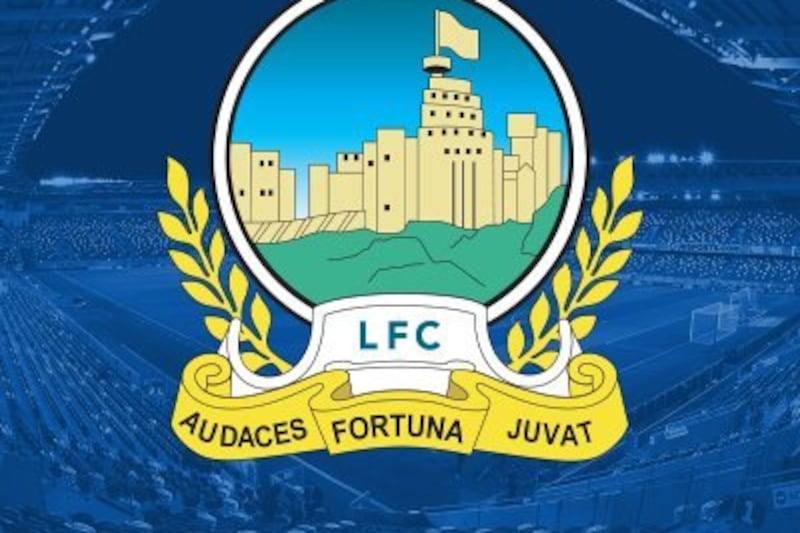FOR a man whose voice will be familiar to those faithful followers tuning into BBC Radio Ulster every Saturday afternoon, delving deep into Irish football’s past was always going to be a labour of love.
Barry Flynn’s dulcet tones have helped illuminate some of the local game’s brightest days for the past 20-plus years, and that passion behind the microphone has been transferred to the written word in his latest tome, ‘The Little Book of Irish Football’.
An onerous task for anyone, but one which Flynn – also a renowned boxing author and historian - embraced with diligence and detail. There will be yarns in here that ring a bell, and others well told down the decades, yet Flynn manages to uncover extra layers in his pursuit of the whole picture.
“I wanted to get behind a lot of the stories,” he says.
“It would be impossible to write a definitive history of the sport in Ireland, but I have tried to recount some tales from yesteryear that may have been lost in the mists of time,
“In choosing the stories within the book, I hope that each tale will entertain, amuse and provide an insight into the game, it’s characters and great exponents of the ‘round ball game’, both north and south of the border.
“The history of football in Ireland, just like the island politically, is a divided one – yet, for the first 41 years, it was a shared history.
“In writing this book on a 32-county basis, I hope to celebrate a shared legacy before and after the split – the good times and the bad time, as well as the characters and players who have provided millions with moments of joy and despair.
“One thing that is apparent is that both international sides have been punching above their weight on the world stage. Such struggles make their success even sweeter.”
George Best’s rise to superstardom, the Gerry Armstrong goal that sank the Spanish in 1982 and the exploits of Jack Charlton’s Republic of Ireland side are among the more high-profile eras revisited, but it is the quirkier tales contained within that keep the pages turning that little bit quicker.
For example, did you know that, for the first 50 years of its existence, the side representing the Irish Football Association (IFA) wore sky blue jerseys – or St Patrick’s blue – rather than green?
“Because all the pictures from that time are black and white,” says Flynn, “you couldn’t tell what the actual colour was.”
It wasn’t until September 1931 that the council of the IFA in Belfast decided to adopt green as the international colour, with one of the main reasons for the change that, for British Championship games against Scotland, the clash of differing shades of blue was causing issues.
However, the switch to green didn’t meet with universal approval at the time as ‘Ralph the Rover’ - football correspondent for the Belfast Telegraph - felt there was “a hidden-hand conspiracy by southern-based Irish internationals to undermine the IFA”, while a letter in the Belfast News Letter bemoaned the fact that green was an unlucky colour.
The book is laced with these kind of interesting titbits – such as the Tyrone man who reported on a famous football match at the Western Front on Christmas Day, 1914.
Lieutenant David Williamson of Castlecaulfield, in a letter home to his father, wrote of a “sort of truce” with German forces – and the game that came about in the hours after.
“It was the queerest thing in the world to see lots of men, who a few hours before were intent on killing each other (and will again tomorrow) talking together as if they were the greatest friends in the world.
“They even arranged a football match and since I started writing this letter a telephone message has come through to say that the Germans have won by three to two.”
Some things never change…
The stories of famous figures such as Mickey Hamill, ‘the darling of the Falls’, and Jimmy Hasty – the legendary figure who enjoyed a stellar career despite losing an arm as a teenager - are recounted in impressive detail, as is Dixie Dean’s stint at Sligo Rovers and Gordon Banks’s sole appearance for St Patrick’s Athletic.
The 1966 World Cup winner had been retired for four years by the time he turned out in a 1-0 win over Shamrock Rovers in 1977, a car accident having cost him sight in his right eye.
However, a chance meeting with St Pat’s manager Barry Bridges at Heathrow airport ended up drawing 7,000 spectators to Inchicore, with Banks assuring him: “I can see the same ball with one eye that I can see with two.”
There’s reminiscences about the ‘Big Freeze’ that brought some of England’s biggest teams to Ireland, the story of the Armagh man who invented the penalty kick, Danny Blanchflower’s snub to TV’s most famous red book and the Len Brennan-style shenanigans of the Archbishop of Dublin around an international game against Yugoslavia - and even then we’re still only scratching the surface.
“Football in Ireland today remains vibrant and defiant,” says Flynn.
“To understand how the sport has survived and thrived, it is important to appreciate football’s resilience. That resilience has been built over generations by fans, administrators and players across the island.
“It is a legacy built also on grit and determination, wit and characters. When it comes to football, Irish people have acquired a highly developed sense of the ridiculous.”
As legendary RTE commentator George Hamilton observes in the foreword, these pages are “filled with stories that have woven the fabric of Irish football, our shared and glorious obsession”.
“This,” he adds, “is the book I have been waiting for.”
For signed copies of ‘The Little Book of Irish Football’, direct message Barry Flynn on X @thebarryflynn








